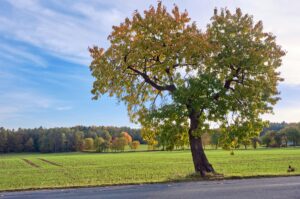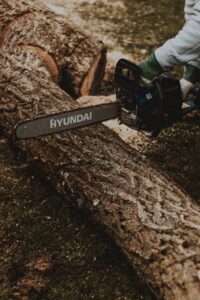Tree Service Perry Utah

Tree Service Perry Utah
Professional Tree Services by Experienced Arborists in Perry
Clean Cuts is uniquely situated and conveniently located “in the middle of everything.” Perry is not just a great place to raise a family, it is also a great place to enjoy nature through the nearby magnificent national forests.
Our arborists at Clean Cuts Trees have years of experience servicing trees and land for both residential and commercial properties in Perry, UT. There is no job too big or too small for our experienced team. Rest easy knowing that our licensed, insured, and certified technicians will complete every job with the highest quality and satisfaction.
At Clean Cuts Trees, your satisfaction is our top priority. We may use the newest technology and equipment, but we believe in genuine old-fashioned common courtesy and guarantee that you will receive second-to-none customer service by all our experienced technicians in Perry, UT. As a family-owned business, it is our goal to make every customer feel like they are a part of our family too – because that is how we treat our customers – as family.
We use the safest, most advanced methods, while fine-tuning our services, as we have grown. Whether you need basic tree maintenance or emergency cleanup, our arborists have you covered. Safety has always been our priority. All our arborists are certified and professionally trained so you can rest assured that your property is in the best hands. At Clean Cuts Trees, we can guarantee you the highest quality and customer service in the industry. We have hundreds of loyal customers across the Perry, UT, area thanks to not only our outstanding service, but also our competitive pricing.
Our work is guaranteed, and we never stop until the job is perfect.
Our Professional Tree Care Services include:
Tree Trimming & Pruning
Tree Service Services
Emergency Tree Service
Municipal Tree Service
Land & Lot Clearing
Storm Clean Up
As part of our commitment to provide the most dependable, professionally performed, and high quality service options for our clients, we at Chop Chop Tree are proud to extend the versatile service options to homeowners in more and more area communities each year. To that end, homeowners can now rely on the expertise and experience of Chop Chop Tree arborists for all their tree services in Perry, UT as well as several other neighboring cities and towns!
This means that whatever unique plan you may have in mind for your home’s landscaping and trees, our team of highly trained, highly skilled arborists are available today to provide you with the precise Perry landscaping and tree services in Perry, UT that you need to love the beauty, value, reliability, and safety of your home again, you can be confident that you’ll find it with Chop Chop Tree tree services in Perry, UT.
What Services Can Chop Chop Tree Perform in Perry?
Tree Trimming in Perry, UT
Tree Pruning in Perry, UT
Tree Service in Perry, UT
Stump Service in Perry, UT
Lawn Care in Perry, UT
Landscaping in Perry, UT
Landscape Design in Perry, UT
Lawn Service in Perry, UT
Tree Planting in Perry, UT
Shrub Service in Perry, UT
Homeowners who choose Chop Chop Tree to perform their particular landscaping and tree service Perry, UT needs can count on our team of professional arborists to provide solutions with the most efficiency, convenience, professionalism, and expertise that can be found in the world of Perry landscaping and tree services today! It’s this commitment to providing the best quality services possible that helps to ensure when you choose Chop Chop Tree to provide your landscaping and tree service needs in Perry, UT, you’ll always be confident that you’ve made the right choice.
Why You Should Hire Tree Service Perry
There is much more to tree cutting services than just firing up a chainsaw and lopping branches off a tree. If you are not sure what you are doing when trimming, pruning, or removing a tree, you could end up damaging your house, damaging your car, messing the power lines, or worse, injuring yourself. Below, we have reasons why you should consider hiring Perry tree service professionals:
1. Safety
2. Knowledge
3. Experience
4. Efficiency
5. Range of Services
Professional Perry Tree Service
As a Perry, UT resident, you already have enough responsibilities at work, at home, or even at your business. By letting tree service professionals handle different tree services on your behalf, you can use your time to handle other important things. We offer a professional Perry Tree Service at an affordable price.
Perry Tree Service
To help maintain the overall appearance and health of your landscape, tree service can be a necessary action sometimes. The activity can also aid in the prevention of damage to your home.
If one of your trees has been destabilized by a storm or you would like to get rid of a tree whose roots are affecting your foundation negatively, we can help you. Our Perry tree service professionals will remove the tree safely without affecting your home negatively.
Note: Our top goal is to ensure that all Perry, UT residents keep their trees. Before opting to remove any tree, we will try to find a solution that can allow you to keep your tree.
Perry Tree Trimming
When done correctly, our Perry tree trimming service can help improve both the safety and health of your trees. Whether your goal is to reduce the rate at which your trees are growing or you just want to get rid of low-hanging branches so that your driveway can be clear, we can help with this. Perry, UT residents trust us to use the right techniques to make their trees look their best.
Perry Tree Pruning
Tree pruning is both a science and art featuring a great influence on your trees’ longevity and health. If your tree has some diseased, damaged, or troubling branches, their service won’t just make the tree more appealing, it will also make the tree healthier. Armed with the right tools and pruning experience, our Perry tree pruning team can help save your tree by getting rid of problematic limbs.
Perry Stump Service
In addition to being hazardous and making your property less appealing, old tree stumps are an ideal home for insects. By removing stumps in Perry, UT we help make homes safer, more efficient, and appealing. We focus on leaving your home better than we found it – after removing the stump, our team will focus on the clean-up.
Perry Arborist Services
Trained in the art & science of planting, maintaining, and caring for a wide range of tree species, our team of ISA-certified arborists is capable of making your trees healthier and more appealing. Our team of certified arborists offer the following tree services in Perry:
Tree Services
Trimming and pruning
Planting
Emergency Tree Care
Maintaining Tree Health
arborists
tree-awards
Choosing the Right Tree Service in Perry
If you have never worked with tree service providers before, differentiating between a good and bad tree service provider may not be easy. In most cases, it takes time to research the nearby companies and you have to know what to watch out for in order to choose the right company. Luckily for you, we are the best tree service in Perry, UT. In addition to having years of experience and partnering with the best arborists, we offer the best tree service prices. We focus on making your home a better place at the lowest possible price.
Frequently Asked Questions
How Much Does Tree Service Cost?
Average Tree
On average, you should expect to spend between $250 and $550 on the service of a single tree. The amount you will have to pay will be largely dependent on how long the job takes and how difficult it is. Tree services in areas featuring underground utilities or buildings nearby often cost more.
If you have several trees that you would like to get rid of, you should be able to get a discount since the tree service crew and the necessary equipment are already on your property.
Small Tree Service Cost
If you would like to remove a tree whose height does not exceed 30 feet, you should expect to spend between $100 and $300. Being the easiest to remove, small trees feature the lowest tree service cost. Examples of trees classified under the “small tree” category include:
Ornamental pear
Silver birch
Corkscrew hazel
Hawthorn
Apple trees
Medium Tree Service Cost
If your tree stands at a height of 30 to 60 feet, expect to spend $300 to $700 on its service. Trees featuring medium height include:
Elm, with a height of 40 to 60 feet
Maple, featuring a height of 40 to 60 feet
Linden, standing at 60 to 70 feet
Hornbeam, having a height of 20 to 40 feet
Large Tree Service Cost
Trees with an average height of 60 to 80 feet cost between $700 and $1,100 to remove. Examples of trees classified under the “Large” category include:
Zelkova, with an average height of 50 – 80 feet
Oak, which is 70 to 80 feet tall on average
Very Large Tree Service Cost
Trees standing at 80+ feet cost between $1,100 and $1,800 to remove. This is understandable considering that huge trees require more sophisticated equipment and more experienced personnel. Some of the trees that feature a height of above 80 feet include:
Pine, standing at 80 to 100 feet tall
Tulip, with an average height of 70 to 90 feet
